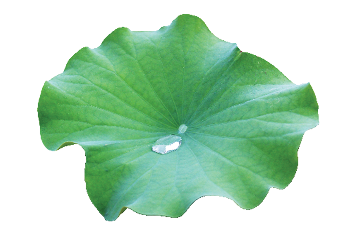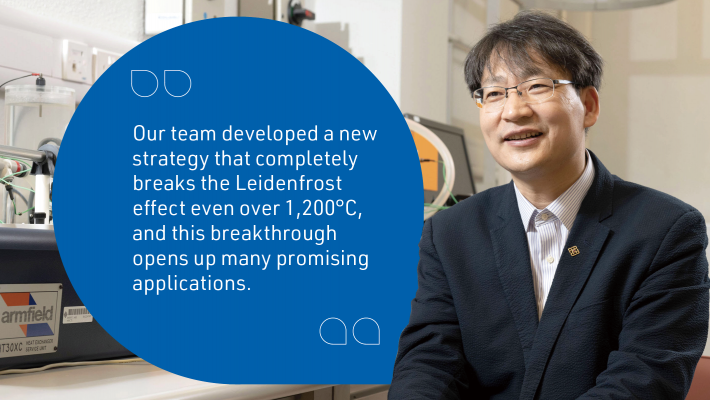A conversation with Associate Vice President (Research and Innovation) Professor Wang Zuankai
Breaking new ground with nature-inspired innovations
With a distinguished track record of research achievements, Professor Wang Zuankai was appointed Associate Vice President (Research and Innovation) of PolyU in November 2022. He is also a Chair Professor of Nature-inspired Engineering in the Department of Mechanical Engineering.
Professor Wang is a founding member of the Hong Kong Young Academy of Sciences, an RGC Senior Research Fellow (2022), and a Highly Cited Researcher as recognised by Clarivate (2022). He is among the recipients of the inaugural BOCHK Science and Technology Innovation Prize. His research in advanced manufacturing has addressed a number of scientific problems that remained unsolved for centuries.
What attracted you to join PolyU?
As a scientist, it is always exciting to pursue new challenges. Over the past decade, I have mainly focused on basic research. Moving one step forward to bridge the gap between fundamental research and practical applications, a domain in which PolyU excels, greatly appealed to me. Secondly, PolyU and my alma mater, the Rensselaer Polytechnic Institute, share common features - both carry the name “Polytechnic” and feature red-brick architecture.
Why did you want to be a scientist, and what is the key to successful research?
I consider scientists as the embodiment of wisdom and have been subconsciously obsessed with science since childhood. However, in graduate school, I was at a loss regarding how to conduct good research, and even had the wrong perception that sophisticated equipment was indispensable to top-notch research. Suffering from various setbacks, I realised that rudimentary equipment was not a barrier to making beautiful scientific discoveries. Pursuing successful research requires passion, vision, action and perseverance.
Your work has been recognised by the Guinness Book of World Records. Can you tell us more?

In 2009, I came to Hong Kong to commence independent research with a limited start-up fund and working in a 9-square-metre lab. Relying on finite resources, my team created the world's most water-repellent surface, inspired by the lotus leaf but also surpassing it. Classical studies tell us that droplets impacting a lotus leaf surface would spread, recoil, and bounce up. The contact time associated with this process is subject to a physical limit, just like the existence of a time limit (~9.5 seconds) for a human 100-metre race, which is difficult to break. Despite extensive efforts, breaking this contact time limit of impacting droplets remained a challenge. After over two years of persistence, we developed a new material that allows droplets to bounce up directly without recoiling, achieving ~80% reduction in contact time between a liquid drop and a solid surface. Owing to its significance in liquid repellency, the shortest contact time of droplets was recognised by Guinness World Records.
What are the applications of this technology?
This breakthrough not only changes deep-rooted scientific knowledge established 100 years ago, but also spurs many potential applications such as the water-energy nexus, antifouling, drag reduction, and anti-icing.
One follow-up project was the development of a droplet-based electricity generator that lightens up to 100 LEDs instantaneously based on one impacting droplet, published in Nature in 2020. My team also demonstrated that one impacting droplet could instantaneously illuminate a 20-watt light bulb.
Can you discuss your research which led to you being awarded the Croucher Senior Research Fellowship (2023)?
I am honoured to receive this prestigious award for solving the classical Leidenfrost effect, first observed in 1756. This physical effect widely manifests in our daily life, as evidenced by the dancing of water droplets on a hot pan due to the formation of an insulating vapour layer. Despite its visual appeal, this physical effect is an enemy of efficient boiling heat transfer. After around four years of hard work, our team developed a new strategy that completely breaks the Leidenfrost effect even over 1,200°C. This breakthrough opens up many promising applications, especially in the highly efficient cooling of electronic devices, data centres, and nuclear power plants.
How do you get inspiration for your research?
On the one hand, I always look at my research from a historical perspective, trying to understand the physical nature and discover truth based on previous discoveries. On the other hand, I am keen on searching for inspirations from nature. Combining the physical understanding and inspirations from nature enables me to develop new materials, devices, and systems to solve global challenges.
What is your advice for young people who aspire to be successful researchers?
Be passionate, proactive, and persistent. The journey to successful research might be full of failures, but failure also provides constructive feedback to re-transform ourselves. Meanwhile, do not underestimate the value of small things. Sometimes, a small idea, a small experiment, or a small attempt can be a turning point in our lives.
Do you have a motto that you live by?
I like the lyric “There can be miracles when you believe” in a song entitled “When You Believe”. This song gave me strength and rekindled my hope during difficult times. I also use this motto to inspire my students when they encounter difficulties.
How do you spend your free time?
Work and life are intertwined in my world, and it is difficult to draw a clear line. During my free time, I like hiking with my students. I also write short essays to build a balance between vigorous thinking and undisciplined literary imagination.






